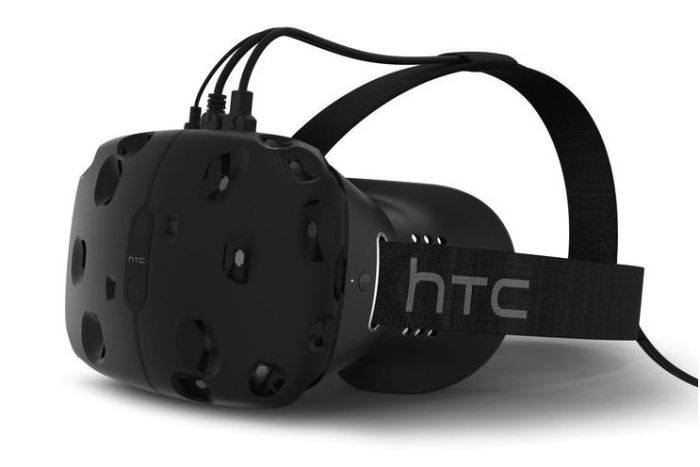
On Sunday, March 1st, HTC held a presentation on the eve of the Mobile World Congress, Barcelona. During the course of the event, they revealed a new VR headset they’re developing in partnership with Valve.
I pulled together news on the announcement from a variety of sources a few hours after it was made. Since then, more information has hit the media, the results of numerous opportunities for hands-on demonstrations. And going by the feedback, it would appear Oculus VR has some very series competition on its hands.
The big thing everyone has been pointing to as being the real secret sauce for VR is a sense of presence. With so many different systems in so many different states of development, how this will be properly achieved has perhaps been hard to judge. Some headsets are managing it in part, some third-party peripheral makers are looking at various means of providing it with room sensors, body kits, etc. However, from all the hands-on reports, it would seem that HTC are the first to nail it in one fairly straight forward package.
“With the original Oculus Rift and things like Samsung Gear VR, that sensation of really being somewhere else is present, but fleeting,” Carlos Rebato says, writing for Gizmodo. “Those can’t track your body, so as soon as you lean just slightly, the illusion is shattered. The Oculus Rift DK2 did it better, with a motion tracking camera that at least let you lean, but you were still a sort of an armless half-body. Sony’s Project Morpheus improved it further by using controllers keep track of your hands.
“But the Vive? It’s like nothing that’s ever come before.”

Gareth Beavis, over at Techradar, is equally gushing. “There’s a TV show from the early 1990s called Red Dwarf that depicted the last human (and a group of humanoids) that were lost in space in the future, desperate to get home. One of the big ways they stayed entertained was with a holographic headset that let them play in hyper real worlds, like they were living in the action sequence … I always thought that idea, that experience, would never be real.
“But with the HTC Vive I took my first steps into that world.”
Both reports – and others in a similar vein – point to the distinguishing factors that make the Vive the complete package: the laser “base station” scanners and the dedicated hand controllers. Details of both of these were rough at the time of HTC’s announcement, but the various hands-on demonstrations taking place at the MWC and, under the Valve banner, as the Game Developers Conference in San Francisco, more information on them has filtered into the tech media.
The scanners are small, box-like objects designed to be mounted on wall at 90-degrees to one another. As noted in my original article ion the Vive, these can then scan a square area up to 4.6 metres (15ft on a side), accurately tracking multiple sensors on the headset, and the motions of the wearer’s body and recreating them within a virtual environment, allowing the wearer to move around “inside” a virtual space. To reduce the risk of collisions with physical objects, the scanner also map the location of walls and furniture, and the system fades these into the wearer’s field of view should they get too close.


